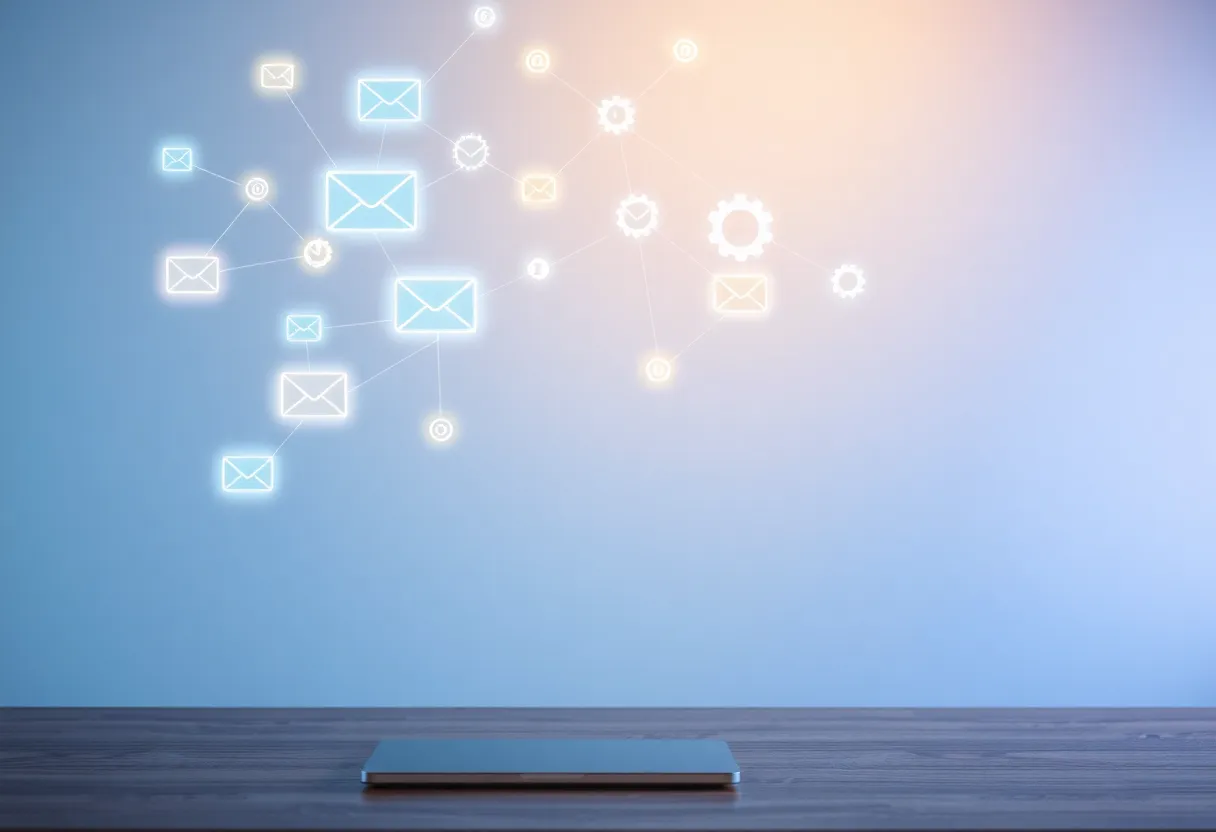Small businesses don’t need a night shift to deliver excellent after hours customer support. Use the playbooks, templates, and KPIs below to respond fast, protect sleep, and convert late‑night questions into loyal customers.
Why after-hours response matters
Research highlight
- 72% of customers want immediate service when they reach out (Zendesk, 2023) [1].
- Nearly half of consumers expect 24/7 support, and 74% will switch after poor experiences (Vonage, 2024) [2].
- Contacting a lead within 1 hour makes you nearly 7× more likely to qualify it versus waiting longer (Harvard Business Review, 2011) [3].
- Only 8% of customers used a chatbot in their most recent service interaction—performance varies by issue type (Gartner, 2023) [4].
Customers ask questions whenever it’s convenient for them—not just during business hours. Meeting them with a friendly, immediate acknowledgement and a clear path to resolution inspires trust, prevents churn, and captures sales you’d otherwise miss.
For small business owners, the sweet spot is a blended model: automation handles routine requests and lead capture overnight, while humans follow up promptly on anything nuanced the next business day.
Tip: If you already use scheduling, CRM, or ecommerce tools, connect them to your assistant so overnight answers include accurate status info. See available integrations.
Set your after-hours policy and SLAs
Create a short policy that fits your resources and tells customers exactly what to expect. Publish it on your contact page and include it in auto‑replies.
Channel‑by‑channel SLOs (suggested)
- Chat/website messenger: instant acknowledgement; target human follow‑up within 12 hours if unresolved.
- Email/contact form: auto‑reply within 1 minute; target resolution or meaningful update by next business day.
- SMS/WhatsApp: auto‑reply within 1 minute; human follow‑up next business day.
- Social DMs: acknowledgement within 15 minutes via bot; next‑day human follow‑up.
- Phone/voicemail: callback by noon next business day (or provide an emergency line if applicable).
Policy checklist
- Business hours and time zone.
- What counts as an emergency (with example scenarios).
- How to reach a human for urgent issues.
- Estimated response and resolution times by channel.
- Links to self‑service resources (FAQ, order tracking, booking).
- Privacy statement for info collected after hours.
Build your toolkit (automation + human handoff)
1) Smart auto‑replies that set expectations
- Thank customers, confirm you received their message, and give a concrete timeframe (e.g., “by 10 a.m. ET next business day”).
- Offer self‑service shortcuts (order tracking, booking, FAQ) and a path to flag emergencies.
- Collect missing details up front (order number, photos, preferred contact time).
2) AI chatbot support for common requests
Use your bot to answer recurring questions, qualify leads, route by topic, and capture contact info—even while you sleep. Design the bot to gracefully hand off when the customer requests a person or when the topic is complex (repairs, billing disputes, custom quotes). This aligns with research showing chatbots perform unevenly across issue types (Gartner, 2023) [4].
3) A living knowledge base
- Create “how do I” articles for the top 20 questions; keep them short, scannable, and step‑by‑step.
- Link articles in your auto‑replies and bot answers; update them when policies change.
4) Seamless integrations
Connect your assistant to scheduling, CRM, or ecommerce so customers can get answers, book, or reorder without waiting. You can set this up quickly with Small Business Chatbot integrations.
Ready-to-use scripts & templates
Email auto‑reply
Subject: We got your message — here’s what happens next
Hi {{first_name}},
Thanks for reaching out to {{business_name}}. Our team checks messages first thing next business day and will reply by {{next_business_day_time}}.
If this is urgent (e.g., {{your_emergency_examples}}), reply with URGENT in the subject or call {{emergency_number_if_any}}.
In the meantime:
• Track orders: {{tracking_link}}
• Book/reschedule: {{booking_link}}
• FAQs: {{faq_link}}
If you can, please include: order #, photos, and your preferred call-back time.
Thanks again,
{{business_name}} SupportVoicemail script
Thanks for calling {{business_name}}. You’ve reached us after hours.
For emergencies ({{examples}}) press 1 or call {{emergency_number}}.
For everything else, please leave your name, number, and order #.
We’ll call you back by {{next_business_day_time}}. Thank you!SMS/DM auto‑reply
Hi {{first_name}} – thanks for messaging {{business_name}}.
We’re offline now but will reply by {{next_business_day_time}}.
Need quick help now? Try our FAQ {{faq_link}} or reply URGENT if this can’t wait.Chatbot handoff prompt
It looks like this needs a specialist. I’ve summarized your request and flagged it for our team.
You’ll hear from us by {{next_business_day_time}}. Anything to add before I send?Smart triage and escalation
Prioritize by impact and urgency
- Urgent: safety issues, active outages, time‑sensitive booking conflicts, locked‑out accounts.
- High: billing mistakes, broken orders, VIP clients, high‑value sales opportunities.
- Normal: product questions, returns, general pricing.
Practical workflow
- Bot or form tags the topic and urgency (keywords + customer selection).
- Auto‑reply confirms receipt and sets the expectation clock.
- Overnight queue groups messages by severity and channel.
- Next morning: assign “urgent” first; aim for one‑touch resolution with templates and links.
Escalation rules: if a customer asks for a person, if the topic includes money at risk (billing disputes), or if confidence score is low, route to a human immediately. This mirrors evidence that bots struggle with certain issue types (Gartner, 2023) [4].
Staffing models without burnout
- Automation‑first: No on‑call; rely on bot + auto‑reply + morning sweeps. Best for low‑risk use cases.
- Rotating on‑call: One person monitors an “urgent only” inbox/phone for true emergencies (keep volume low with strict definitions).
- Overflow partner: Use an answering service to capture details after hours; you still resolve next day.
- Follow‑the‑sun: Distribute coverage across time zones if you have remote team members.
Whichever model you choose, document what “urgent” means and keep it to a short list to protect work‑life balance.
Measure what matters
Core KPIs
- After‑hours first‑response time (bot or auto‑reply + time to human follow‑up).
- Next‑day resolution rate (% resolved by noon local time).
- Lead conversion from after‑hours (inquiries → bookings/sales). See [3] for why speed matters.
- Handoff success (% of bot conversations that complete vs. escalate with context).
- Customer satisfaction (CSAT) on after‑hours tickets.
Simple formulas
- Next‑day resolution rate = tickets closed by noon ÷ tickets received after hours.
- After‑hours conversion = orders or booked meetings tagged “after‑hours” ÷ after‑hours inquiries.
- Cost per after‑hours contact = (software + staffing + partner fees) ÷ after‑hours contacts.
Collect baseline numbers for 2 weeks, implement improvements, then re‑measure. Aim for a 20–30% lift in next‑day resolutions within the first month.
Want a faster start? See how other small businesses cut response times and captured more leads.
30‑day implementation plan
- Week 1: Define “urgent,” set SLOs, publish your after‑hours policy.
- Week 2: Turn on auto‑replies for email, SMS/DM, and voicemail; add FAQ links; build 5 knowledge articles.
- Week 3: Launch your chatbot for 5–10 top questions; configure human handoff; integrate booking/CRM.
- Week 4: Train the morning sweep, implement escalation rules, start tracking KPIs.
Start with Small Business Chatbot Free trial
Frequently asked questions for after-hours customer service
1) Do I really need 24/7 live staffing?
No. Most small businesses succeed with automation overnight and human follow‑up next business day. Customers mainly want instant acknowledgement and a clear timeframe. Nearly half expect 24/7 support options (Vonage, 2024) [2].
2) How fast is “immediate” in practice?
For after hours, “immediate” typically means an instant auto‑reply or bot response, plus a promised human follow‑up by a specific time the next day. Research shows 72% want immediate service (Zendesk, 2023) [1].
3) When should the bot hand off to a person?
Always hand off on request or when the issue involves money at risk, complex complaints, or sensitive topics (e.g., billing disputes), where bot resolution rates are lower (Gartner, 2023) [4].
4) What’s the business case for responding after hours?
Speed to first contact correlates with revenue. Firms reaching out within one hour are nearly 7× more likely to qualify leads than those that wait (Harvard Business Review, 2011) [3].
5) What should my auto‑reply include?
Thanks, timeframe, emergency path, self‑service links, and a short list of details to include (order #, photos). Keep the tone warm and human.
6) How do I cover emergencies without burning out?
Use a strict definition of “urgent,” rotate lightweight on‑call, and reserve after‑hours phone for true emergencies. Everything else queues for morning.
7) How do I know it’s working?
Track after‑hours first‑response time, next‑day resolution rate, conversion from after‑hours leads, and CSAT. Improve one metric at a time.
References
- [1] Zendesk. “Immersive CX is the new way to win and keep customers.” Press release, Jan 18, 2023. (Zendesk, 2023). Link
- [2] Vonage. “Global Customer Engagement Report 2024.” Press release, Jan 24, 2024. (Vonage, 2024). Link
- [3] Oldroyd, McElheran, Elkington. “The Short Life of Online Sales Leads.” Harvard Business Review, Mar 2011. (Harvard Business Review, 2011). Link
- [4] Gartner. “Only 8% of Customers Used a Chatbot During Their Most Recent Service Interaction.” Press release, Jun 15, 2023. (Gartner, 2023). Link



